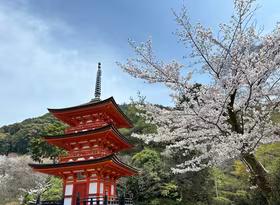The global economic outlook soured in early 2022, with the recovery being stifled by high inflation, continued supply chain disruptions, and rising geopolitical clashes. There’s a lot happening, and although this article doesn’t capture every piece of global economic news, it does set out some of the key global hurdles, and what they mean for the economic outlook.
World growth expectations lowered for 2022
Economic disruptions from the war in Ukraine, high inflation, and ongoing COVID-19 restrictions have seen world growth expectations lowered recently. Consensus forecasts for global growth have dropped to 3.8% in 2022, down from an average of 4.2% growth expected throughout last year.
Lower growth is now expected across Europe and North America, with various factors acting together as a headwind for economic recovery from the pandemic. Europe’s economic growth in 2022 is set to be one percentage point lower than previously expected at the start of 2022, with Germany’s growth outlook slashed from 3.6%pa to 2.2%pa as high energy costs weigh on manufacturing output.
Ongoing restrictions in China to combat a wave of Omicron is also set to disrupt production and supply chains again, as well as Chinese demand. Cargo ship waiting times have grown long, and retail spending in China fell 3.5%pa in March – the first fall since 2020. For now, Chinese economic activity is set to rebound, but the flow-on effects of the current disruptions – which have no end in sight yet – risks further derailing attempts to boost the global economic engine.
Rising cost pressures are being exacerbated by these global factors, with a vicious feedback loop causing prices to rocket higher still as demand outstrips a much more fragile level of supply of various goods and services.
Inflation rockets higher on food and energy pressures
Energy prices globally have risen steeply. The World Bank’s energy price index has doubled from a year earlier and is now just 7% below its highest reading since mid-2008 (with history back to the 1960s). Oil prices are up 77% from a year earlier, coal is up 225%, and global natural gas prices are up 316%. European natural gas prices have soared 592%pa!
Fertilizer and food prices have also jumped higher as disruptions persist. Global urea prices are up 157% from a year ago, and food prices generally are up 37%pa. Food prices, according to both World Bank and FAO data, are at their highest ever, eclipsing even the heady highs of the 1970s.
With limited supplies available, cooking oils demonstrate the challenges faced for food prices generally, having seen considerable price growth and export bans implemented. Around 75% of all sunflower oil comes from Ukraine and Russia, which has sent prices for other substitute oils higher. Palm oil prices have increased 72%pa over the last year (see Chart 2), leading producer Indonesia banned exports to increase domestic supply and reduce prices.
Economic mismanagement causes upheavals
Global instability isn’t isolated to Eastern Europe, with both Pakistan and Sri Lanka facing considerable economic challenges. In Pakistan, Prime Minster Imran Khan has been ousted and the new administration faces an uphill battle to figure out how to address fiscal deficits, low foreign reserves, and get IMF talks back on track for continued debt support.
Meanwhile, Sri Lanka is facing its greatest economic crisis in decades. Foreign reserves are decimated, leaving the country unable to pay for imports. Fuel, food, and medicines have run out in many parts of the country, after Sri Lanka first used its precious little foreign reserves for debt repayment obligations, before defaulting as the humanitarian crisis deepened.
A fertilizer and food growing crisis, a collapse in tourism and remittances because of COVID-19, and tax cuts funded by massive fiscal deficits are at fault in Sri Lanka. Sri Lanka left asking for financial support too late, with billions in emergency bridging finance needed immediately just to allow for critical imports ahead of more formal debt support from international institutions.
International flights yet to recover fully
The delays in the global economic recovery are set to extend timeframes for reviving tourism. Flight data from OAG shows that the number of airline seats available in mid-April 2022 was around 78% of pre-pandemic levels, with 93% expected by early July (see Chart 2).
However, this travel revival is happening faster within local borders. Domestic seat numbers globally have recovered to around 87% already and are set to be back to pre-pandemic levels by mid-2022. Although, international seat numbers are only at 66% of pre-pandemic levels, rising to 81% by mid-year. Lower global growth and lockdowns in China could well slow the international flight recovery further.
New Zealand on the hunt for trading enhancements
Amid all these disruptions, a focus on trade is remerging globally. Australia has recently signed a trade agreement with India, a considerable foothold into one of the most important trading partner economies of the next few decades.
Such moves come as the US and UK continue to deploy more resources into the Indo/Asia-Pacific, even as China also expands its presence in the area.
Prime Minister Jacinda Ardern’s recent trip to Singapore and Japan also signal New Zealand’s desire to get back on the international stage, with trade being a key focus. The government will be looking to advance trade deals with the EU now that France’s election is out of the way, alongside the NZ-Gulf Cooperation Council Free Trade Agreement with Middle Eastern states. India remains a key objective, albeit a trade interaction that remains elusive for New Zealand so far.
Global economic revival spluttering
Geopolitical tensions, high inflation, and trade challenges are all set to limit global economic growth in 2022. The global economy already feeling the effects of dislocated supply of both goods and services. Lower growth is both a blow but also a necessity – at least in the short-term. Economic activity has been running ahead of the resources needed to sustain the pace of the economic revival and navigating further growth will be a careful balance of resources and logistics. A refocus on trade opportunities is a good opportunity to get the global economic engine is firing on all cylinders, and New Zealand is well-positioned to take advantage.






